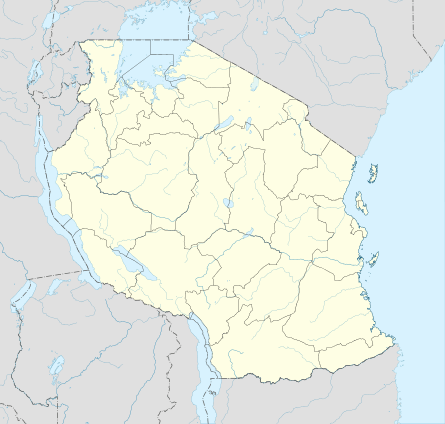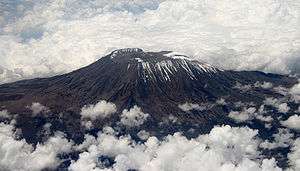List of World Heritage Sites in Tanzania

The UNESCO (United Nations Educational, Scientific and Cultural Organization) World Heritage Sites are places of importance to cultural or natural heritage as described in the UNESCO World Heritage Convention, established in 1972.[1] Tanzania ratified the convention on 2 August 1977, making its historical sites eligible for inclusion on the list.[2] Tanzania has 7 UNESCO world heritage sites and two of them are placed on the world heritage sites in danger.
List of sites
The table lists information about each World Heritage Site:
- Name: as listed by the World Heritage Committee
- Location: province or town of site
- Period: time period of significance
- UNESCO data: the site's reference number; the year the site was inscribed on the World Heritage List; the criteria it was listed under. Criteria i through vi are cultural, while vii through x are natural (the column sorts by year added to the list)
- Description: brief description of the site
-
 Site listed as "in danger"
Site listed as "in danger"
| Name | Image | Location | Period | UNESCO data | Description | Reference |
|---|---|---|---|---|---|---|
| Ngorongoro Conservation Area | Arusha Region | Modern, 3.6 Million years ago | 39; 1979; (iv),(vii),(viii),(ix),(x) | The Ngorongro Conservation area is a cultural and natural world heritage site. The conservation area is home to the Ngorongoro Crater, the world's largest caldera and the various prehistoric sites. The Area also houses various endangered wildlife and the Maasai tribe coexist with the animals. | [3] | |
| Ruins of Kilwa Kisiwani and Ruins of Songo Mnara |
 |
Kilwa Kisiwani | 13th to the 16th century | 144; 1981; (iii) | The ruins are of ancient port cities built by the Arab rulers of the East African coast during the 13th century. The ruins are labeled in danger due to the continued deterioration of the property due to natural and human actions. | [4] |
| Serengeti National Park | Arusha Region & Mara Region | N/A | 156; 1981; (vii),(x) | The Serengeti national park is home to one of the largest mammal migration in the world. The annual migration of herbivores and carnivores is one of the most impressive sights in the world. | [5] | |
| Selous Game Reserve |  |
Iringa Region & Morogoro Region | N/A | 199; 1982; (ix),(x) | The Selous reserve is 50,000 km2 the size of many foreign countries. The Reserve is home to vast difference in vegetation and large mammals. The site is labeled to be in danger due to the increasing amounts of poaching. | [6] |
| Kilimanjaro National Park |  |
Kilimanjaro Region | N/A | 403; 1987; (vii) | The national park holds the Mount Kilimanjaro, the highest point in Africa. The Snow-capped mountain is surrounded by endless plains of savannah. The park also holds numerous large mammals, some of them endangered. | [7] |
| Stone Town of Zanzibar |  |
Zanzibar City | Arab slave trade period | 173; 2000; (ii),(iii),(vi) | See also: List of Landmarks in Stone Town
The stone town of Zanzibar is a maze of a fusion of multiple cultural influences the town has experienced for centuries. The ancient city still retains Arab, Persian, Indian and Coastal culture. The town is the cultural capital for Swahili Culture. |
[8] |
| Kondoa Rock-Art Sites |  |
Kondoa District | 5th Century | 1183; 2006; (iii),(vi) | The rock art sites are scattered all over the rift valley and have existed there for over 2000 years. The Art depict heaps of historical information of the evolution of people during the hunter gatherer period. | [9] |
See also
References
- ↑ "Properties inscribed on the World Heritage List". UNESCO. Retrieved 30 March 2011.
- ↑ "States Parties: Ratification Status". UNESCO. Retrieved 2 June 2011.
- ↑ "Ngorongoro Conservation Area". UNESCO. Retrieved 25 December 2015.
- ↑ "Ruins of Kilwa Kisiwani and Ruins of Songo Mnara". UNESCO. Retrieved 25 December 2015.
- ↑ "Serengeti National Park". UNESCO. Retrieved 25 December 2015.
- ↑ "Selous Game Reserve". Unesco. Retrieved 25 December 2015.
- ↑ "Kilimanjaro national park". UNESCO. Retrieved 25 December 2015.
- ↑ "Stone Town Zanzibar". UNESCO. Retrieved 25 December 2015.
- ↑ "Kondoa Rock-Art Sites". UNESCO. Retrieved 25 December 2015.
